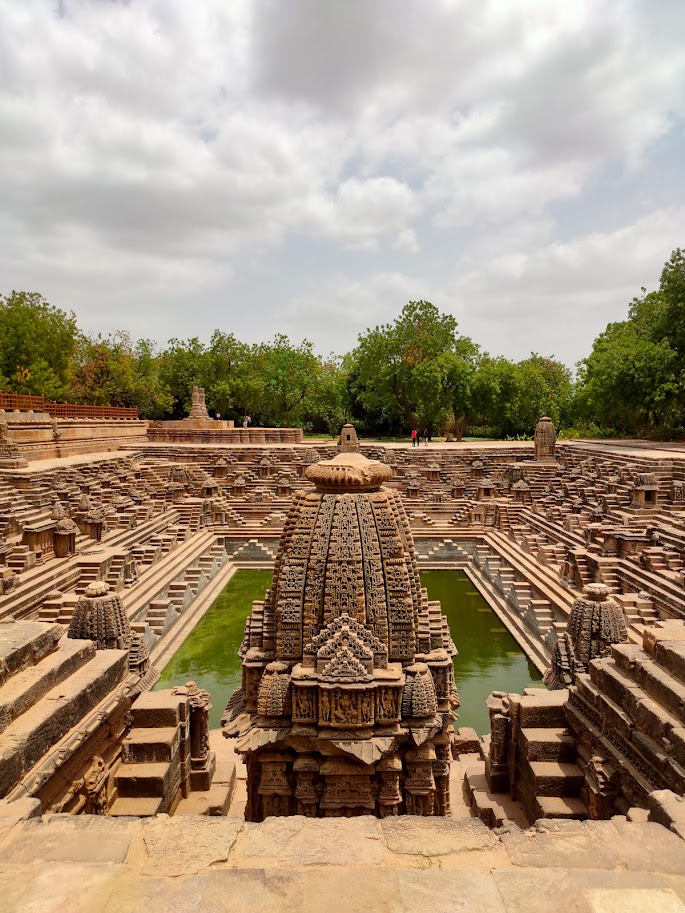Nestled in the heart of Gujarat, India, the Modhera Sun Temple stands as a testament to the architectural and artistic brilliance of ancient India. Located in Mehsana district, this magnificent temple is a remarkable example of the country’s rich cultural and historical heritage. In this blog, we will delve into the history, architecture, and significance of the Modhera Sun Temple, offering a comprehensive understanding of this remarkable monument.
Historical Context
The Modhera Sun Temple, also known as the ‘Surya Mandir,’ was constructed during the reign of King Bhimdev I of the Solanki dynasty in the 11th century. The Solanki dynasty was known for its love of art and architecture, and this temple was built during a time when the Solanki kings were actively patronizing the construction of grand temples in the region.

Architecture
The Modhera Sun Temple is a splendid example of Maru-Gurjara style of architecture. It features three principal components – the Surya Kund (a grand tank), the Sabha Mandap (the assembly hall), and the Guda Mandap (the sanctum sanctorum).
- Surya Kund: As you approach the temple, the first thing that captures your attention is the stunning Surya Kund, a rectangular stepped tank. It’s an intricately designed structure featuring 108 miniature shrines, each adorned with exquisitely carved images. The kund served both a ritualistic and aesthetic purpose, and the symmetry of the design is a marvel to behold.
- Sabha Mandap: Beyond the Surya Kund lies the Sabha Mandap, the assembly hall. This hall is supported by 52 intricately carved pillars, each with its unique design. The columns are not only architecturally significant but also tell stories from Hindu mythology through the intricate carvings on them.
- Guda Mandap: The Guda Mandap is the innermost sanctum where the deity was enshrined. Unfortunately, the idol has been removed, but the sanctum itself is a fascinating structure with a lotus-shaped base and an elaborately carved ceiling.
The entire temple is adorned with intricate carvings and sculptures, depicting various deities, dancers, and celestial beings. The craftsmanship on display is awe-inspiring, and it’s evident that the artisans of the time spared no effort in creating a temple that would stand the test of time.
Significance
The Modhera Sun Temple is dedicated to Lord Surya, the sun god, and is renowned for its unique architecture and historical significance. Here are a few key points that highlight the importance of this temple:
- Spiritual Significance: The temple was designed to capture the first rays of the rising sun during the equinox, aligning perfectly with the entrance of the sanctum. This was a symbol of the king’s reverence for the sun god and the importance of the celestial body in Hindu mythology.
- Cultural Heritage: The temple stands as a testament to the rich cultural and architectural history of Gujarat and India. It provides valuable insights into the craftsmanship and devotion of the Solanki dynasty.
- Tourist Attraction: Today, the Modhera Sun Temple is a popular tourist attraction. Its intricate carvings and architectural grandeur draw visitors from across the country and the world.
- Heritage Conservation: The temple is a protected monument, and efforts have been made to preserve and restore its grandeur. This ensures that future generations can continue to appreciate its beauty.
Visiting the Modhera Sun Temple
If you’re planning to visit the Modhera Sun Temple, here are some practical tips:
- Best Time to Visit: The best time to visit is during the Modhera Dance Festival, which is typically held in January. This festival features classical and folk dance performances against the backdrop of the illuminated temple, creating a mesmerizing experience.
- Timing: The temple is open to visitors from 7:00 AM to 6:30 PM.
- Dress Code: While there is no strict dress code, it’s advisable to dress modestly and respectfully when visiting religious sites in India.
- Photography: Photography is allowed, but it’s essential to be respectful and not disturb other visitors or the sanctity of the site.
In Conclusion
The Modhera Sun Temple is not just a historical monument; it’s a symbol of India’s rich cultural heritage, architectural prowess, and spiritual devotion. Visiting this temple allows you to step back in time and appreciate the intricate craftsmanship and the spiritual significance of this magnificent structure. Whether you are a history enthusiast, an architecture aficionado, or simply a traveler looking to explore the beauty of India, the Modhera Sun Temple in Mehsana is a must-visit destination that will leave you in awe of its grandeur and artistry.








